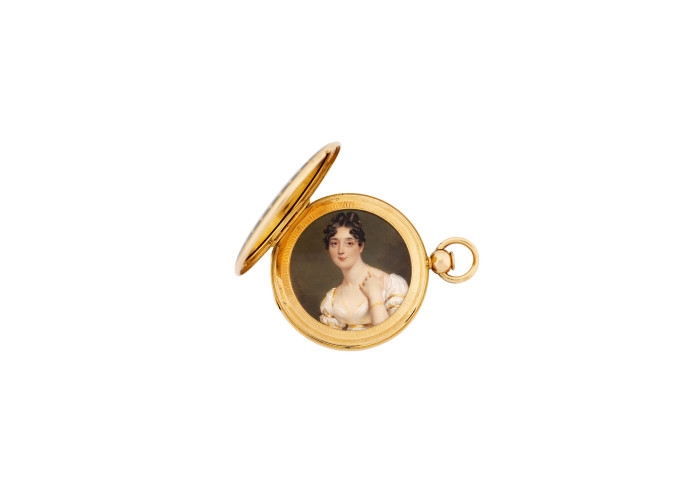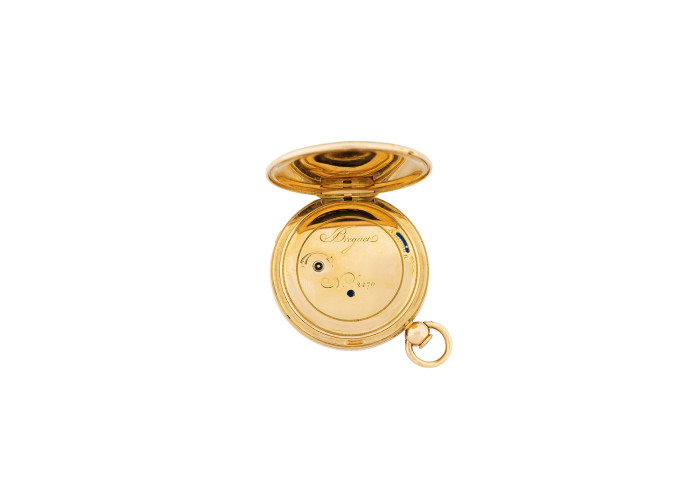Duke of Wellington’s Breguet Watch
This beautiful watch, complete with miniature portrait of an elegant woman, has an extraordinary personal story behind it. It was commissioned from the Swiss master watch-maker Breguet by Joseph Bonaparte, brother of Napoleon. It was actually owned, however, by his enemy the Duke of Wellington, who bought it when the British army marched into France and occupied Paris after the Battle of Waterloo.
This pocket watch was made by the Swiss artisan Abraham-Louis Breguet, who produced superb, individually crafted clocks and watches for the monarchs and aristocrats of Europe. This piece was decorated with a map of Spain, to honour the man for whom it was commissioned – Joseph Bonaparte, brother of the French Emperor Napoleon.
Joseph Bonaparte had been appointed King of Spain by Napoleon in 1808 – part of the French Emperor’s bid to create an allied network of European kingdoms each ruled by a Bonaparte monarch. King Joseph was extremely unpopular in Spain, and the British Army under the command of the Duke of Wellington were able to drive the French out of the Iberian Peninsula in 1813. Unsurprisingly, Joseph refused to buy this watch, which was now an unwelcome reminder of the French disaster in the Peninsular War – which had eaten up so many troops that Napoleon once called it the “Spanish ulcer”. The Duke of Wellington bought the watch in August 1815, perhaps enjoying the irony that a watch made for Napoleon’s brother was now a symbol of a British victory.
The Duke had an extra cover put onto the watch, bearing a miniature portrait. The woman in the painting is Marianne Patterson, an American lady who captivated the Duke of Wellington; he may have had an adulterous affair with her. Marianne was one of three Caton sisters who visited Europe just after the Battle of Waterloo, who fascinated British high society with their beauty and glamour. On first meeting Marianne, the Prince Regent declared: “Is it possible there can exist so beautiful a woman?”
The Caton family already had a close connection to the highest levels of European society. Marianne was married to Robert Patterson, an American merchant. Robert’s sister, Betsy, had married Jérôme Bonaparte, youngest brother of Napoleon, in Baltimore in 1803. Jérôme then abandoned the pregnant Betsy and returned to France under pressure from his brother, Emperor Napoleon.
The Duke of Wellington was entranced by Marianne, although both were already married to other people. They exchanged letters and gifts, and Wellington’s niece Hyacinthe Littleton claimed he “fell violently in love with Mrs. Patterson and it was the amusement of all London”. The Duke personally conducted Marianne around a tour of the Waterloo battlefield in 1816, while he was British ambassador to Paris. The miniature is copied from a portrait of Marianne by Sir Thomas Lawrence, commissioned by the Duke and painted about 1817.
In 1822, Marianne’s husband Robert died of cholera. In a remarkable final twist, Marianne married Richard Wellesley, the Duke of Wellington’s older brother – against the dire and angry warnings of the Duke.
-
Curatorial info
- Production Date: 1815
- Creator: Abraham-Louis Breguet
- Material: Gold and platinum
-
Use this image
- Rights Holder: Copyright Stratfield Saye Preservation Trust.
- License Type: Creative Commons
Private Collection
Some objects - such as this one - are owned by private collectors. Waterloo 200 cannot give information on the ownership or location of these items.



















